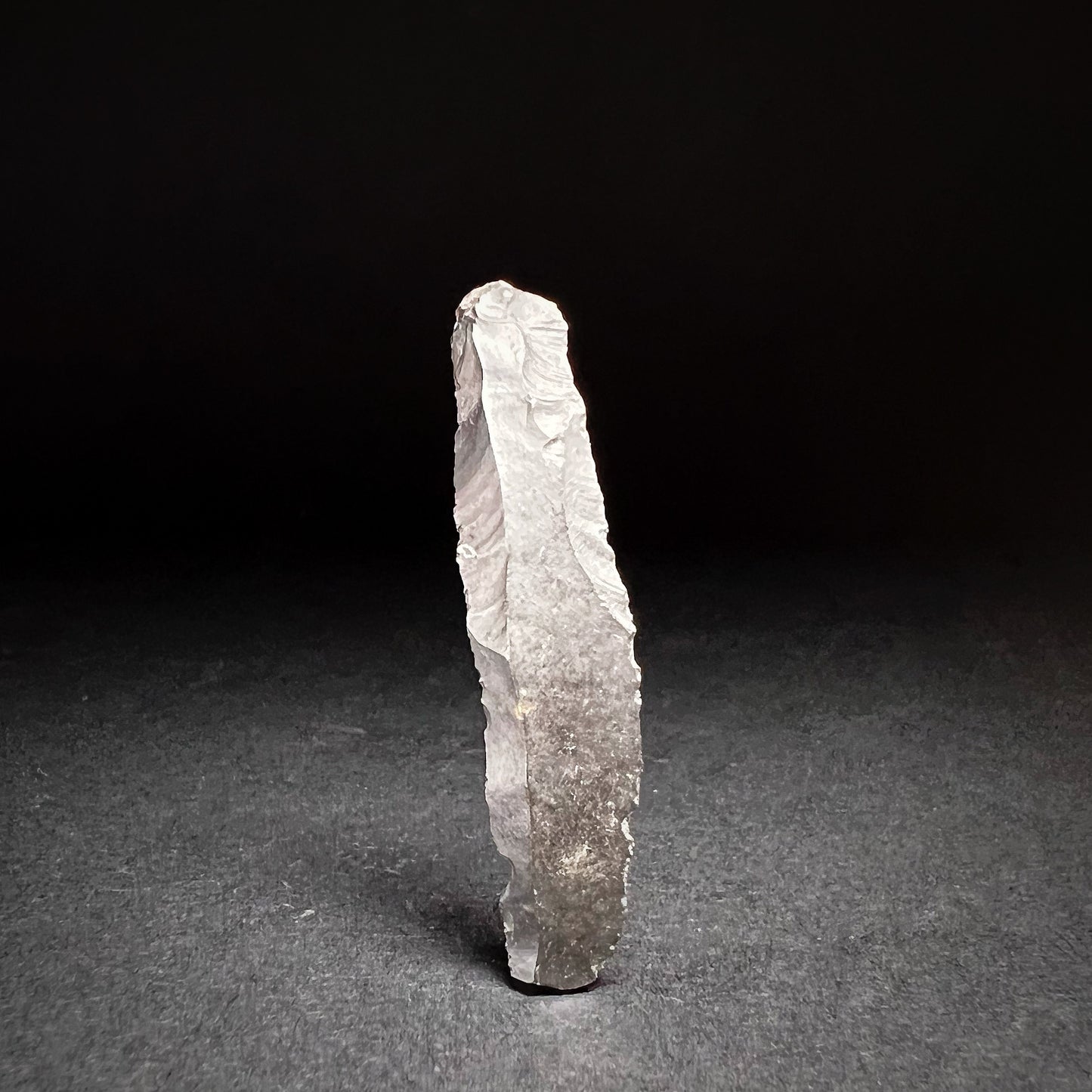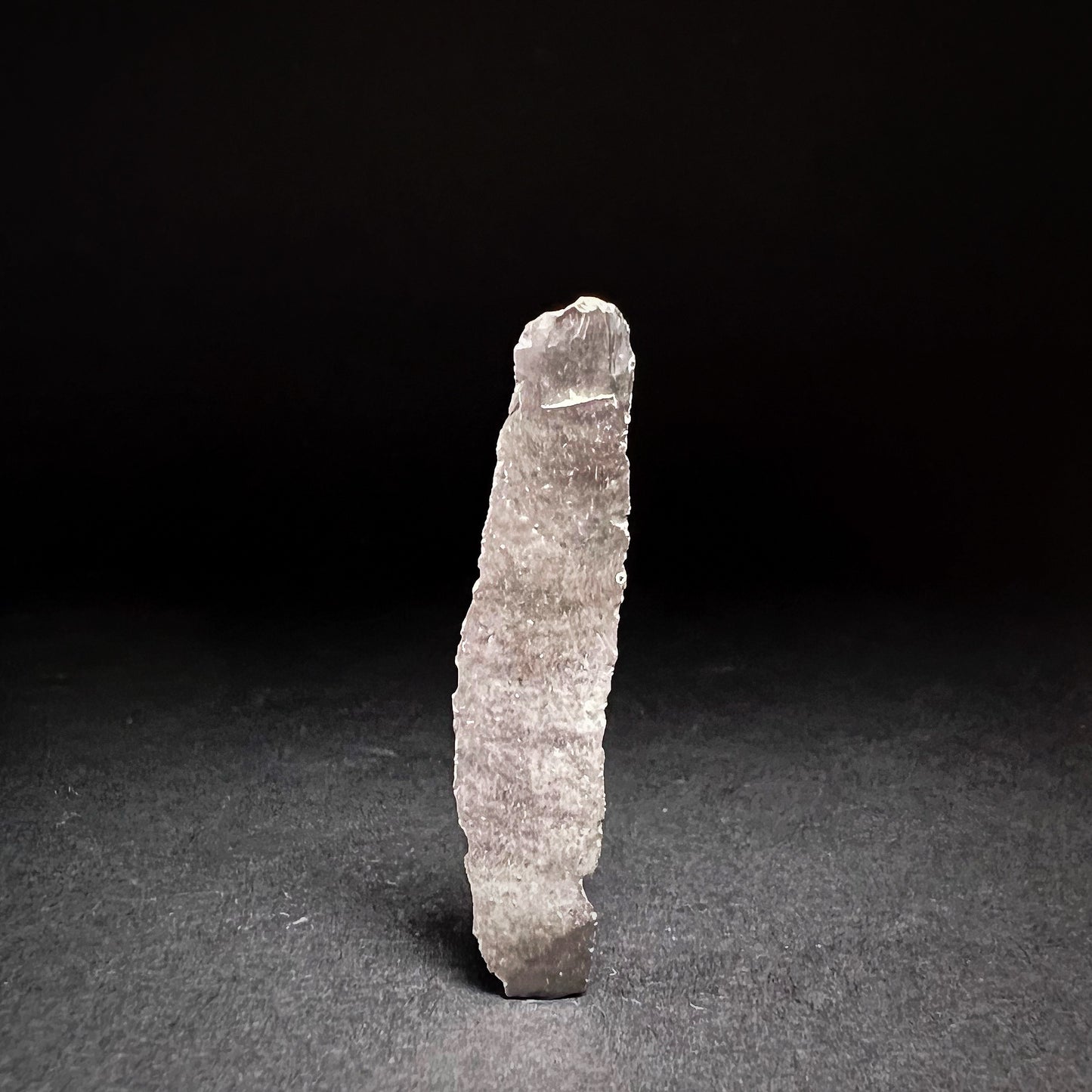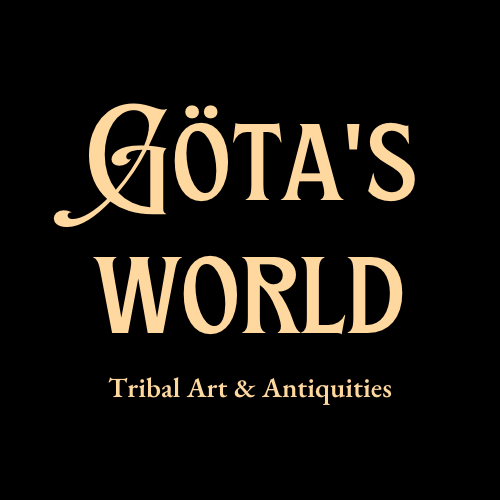Danish Mesolithic Period Flint Blade
Danish Mesolithic Period Flint Blade
Couldn't load pickup availability
Ertebølle Culture, c. 5400–3950 BC, Denmark
A mesmerizing and finely crafted flint blade from the late Mesolithic period, discovered in Denmark and attributed to the Ertebølle culture. This small yet highly effective tool features delicately trimmed, razor-sharp edges—still impressively keen after more than 6,000 years.
In archaeological terms, a blade is a specific type of stone tool, produced by striking a long, narrow flake from a prepared core. These blades were indispensable for a variety of essential tasks including butchering game, carving wood and bone, crafting tools and utensils, and food preparation.
This superb example comes from the Ertebølle culture, which thrived along Denmark’s coastlines and river systems between c. 5400 and 3950 BC. The Ertebølle people were highly skilled hunter-gatherers and fishers, known for settling near fjords, bays, and rivers—regions rich in natural resources.
Their legacy includes the monumental kitchen middens—vast shell heaps, especially of oysters, harvested from the shallows of Denmark’s inland waterways. The Ertebølle were accomplished boatbuilders, navigating these waters in dugout canoes, and their flint-working technology was among the most advanced of the Mesolithic world. They produced axes, knives, chisels, scrapers, burins, arrowheads, and precision blades like this one, alongside bone and antler tools and early forms of pottery.
This flint blade is more than a cutting tool—it is a testament to the ingenuity, craftsmanship, and survival skills of a resilient prehistoric culture. Perfectly preserved in the anaerobic conditions of Denmark's peat bogs, it offers a tangible connection to the daily life and technological sophistication of Europe’s early inhabitants.
Good condition. Surface wear and abrasions commensurate with age, nicks and chip. Size approx. 5,1cm x 1,2cm x 0,3cm.
Provenance: Danish private collection.
References and further reading:
Europe's First Farmers – T. Douglas Price, University of Wisconsin, Madison, Cambridge University Press, 2000 (http://assets.cambridge.org/97805216/62031/ sample/9780521662031ws.pdf)
Inland Ertebølle Culture: the importance of aquatic resources and the freshwater reservoir effect in radiocarbon dates from pottery food crusts, Bente Philippsen & John Meadows, Internet Archaeology (doi:10.11141/ia.37.9)


-
Shipping
The shipment will be prepared in the course of 3-5 days and dispatched via Posti Group Oyj or purchased item(s) can be picked up from our shop during the store's opening hours (Tarkk’ampujankatu 4, 00140, Helsinki, Finland). Within the Finland, all items are shipped via Posti Group Oyj unless otherwise requested. We pack the items carefully and mainly in recycled materials because we want to save nature. You will receive the tracking number for your items by e-mail.
-
Returns
Returns and exchange will be accepted within fourteen days (14) of receipt at the purchaser’s cost to include freight and packaging. Items must be returned in the same condition as when they were shipped, and will not be accepted if damaged or altered in any way. Please inform us via email (info@gotanmaailma.fi) or by calling +358408408352 before sending. We do not accept returns more than 14 days after delivery.


